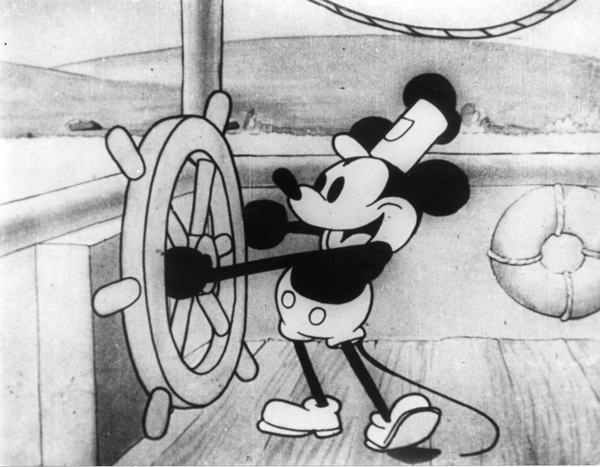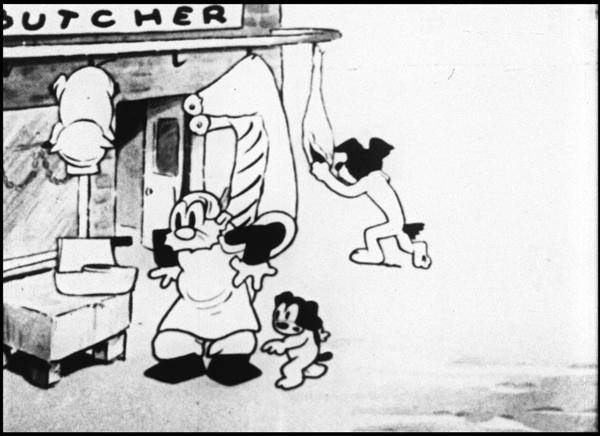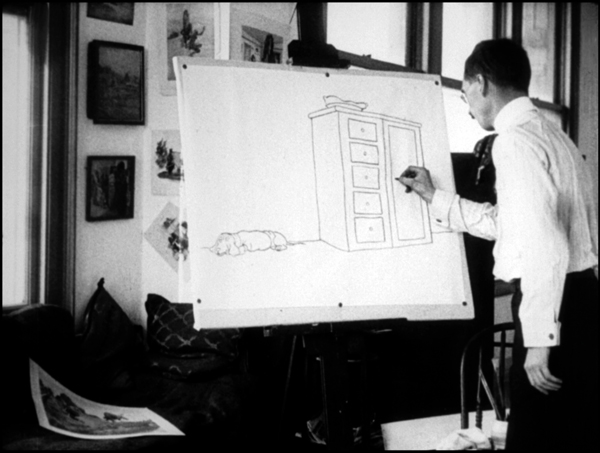The Academy of Motion Picture Arts and Sciences continues its five-part series on animation with The History of Silent and Early Sound New York Animation on Tuesday, May 19, at The Academy Theater on East 59th Street in Manhattan.
Historian and collector Tommy Stathes, a specialist in early animation, hosts the program, which features cartoons from as early as 1900. The evening’s final film, 1928’s Steamboat Willie, introduced Mickey Mouse to the world.
Movies like J. Stuart Blackton’s Humorous Phases of Funny Faces (1906) were made in New York City because that’s where the motion picture industry was concentrated. A vaudeville performer, Blackton would go on to head Brooklyn’s Vitagraph Studios, one of the most successful of the early production houses.
“The beginning titles, they’re mostly trick films, versions of vaudeville acts,” Stathes says. “Winsor McCay was the biggest name early on, but he made films infrequently because they were too detailed and fluid, and took so long to complete.”
McCay, who also revolutionized the newspaper comic strip, drew every frame of his cartoons by hand, a laborious process that would be streamlined later with background artists and in-betweeners. McCay toured vaudeville with movies like Gertie the Dinosaur, interacting with his characters on stage. Stathes will be showing McCay’s How a Mosquito Operates (1912).
Stathes will also be spotlighting J.R. Bray, who ran the first successful animation studio. “Bray could crank out cartoons very quickly,” Stathes explains. “A lot of animators who would become studio heads themselves, like Walter Lantz, Paul Terry, and Max Fleischer, started their careers at Bray Studios.”
Lantz, whose greatest creation may have been Woody Woodpecker, is represented by Cinderella from 1925; Terry, by 1928’s Dinner Time. Along with his brother Dave, Max Fleischer expanded the possibilities for animation, in the process bringing characters like Betty Boop and Popeye to the screen.
Stathes will be showing a title from Fleischer’s “Out of the Inkwell” series, Cartoon Factory (1924). Imaginative and at times just weird, Cartoon Factory mixes animation with live action, as Koko the Clown—one of early cinema’s most haunting figures—matches wits with an automatic drawing machine.
All of the titles in the program except the last come from Stathes’ own collection. Originally filmed on 35mm, they became available to home consumers in smaller formats. TV stations would broadcast 16mm copies, for example.
“One set of about 40 prints were found in a barn in the Midwest, just sitting there,” Stathes says. “They were on 28mm, another home format. I was able to obtain the animated titles in the collection, including How Animated Cartoons Are Made from Bray Studios. That was considered lost, but I’m an optimist when it comes to lost films being rediscovered.”
With Cartoon Roots, Stathes has begun releasing some of his rare titles on Blu-ray. And with his “Cartoon Carnival” series, he projects 16mm prints in a variety of locations around New York City. Check his website for more information.
Bobby Bumps, Col. Heeza Liar, and Felix the Cat were some of the stars of early animation. Their vehicles may have ragged edges, but their influence leads straight down to Pixar and “The Simpsons.”
“Animators were still trying to figure out what techniques to use,” Stathes says of the earlier titles. “Some of the cartoons have problems with pacing and movement. For instance, a character who should move quickly across the screen might look too slow. When sound came in, they could animate objects much more precisely, using the soundtrack as a guide. That’s when everything in the picture really came alive.”
The program includes the first sound-on-film cartoon produced in New York, Dinner Time (1928). Previous cartoons were often shown with musical accompaniment. In fact, the Fleischer brothers invented the “follow the bouncing ball” sing-along cartoon in 1925’s My Bonnie Lies Over the Ocean.
Made in Hollywood, Steamboat Willie marked animation’s shift from New York to Los Angeles. Within a few years the industry was consolidated around major studios like Warner Bros. and MGM.
On Tuesday’s program, Stathes will also introduce special guest J.J. Sedelmaier, an author, illustrator, animator and director.
The final program in the series, A Sneak Peek of Disney-Pixar’s Inside Out, takes place on May 29.





